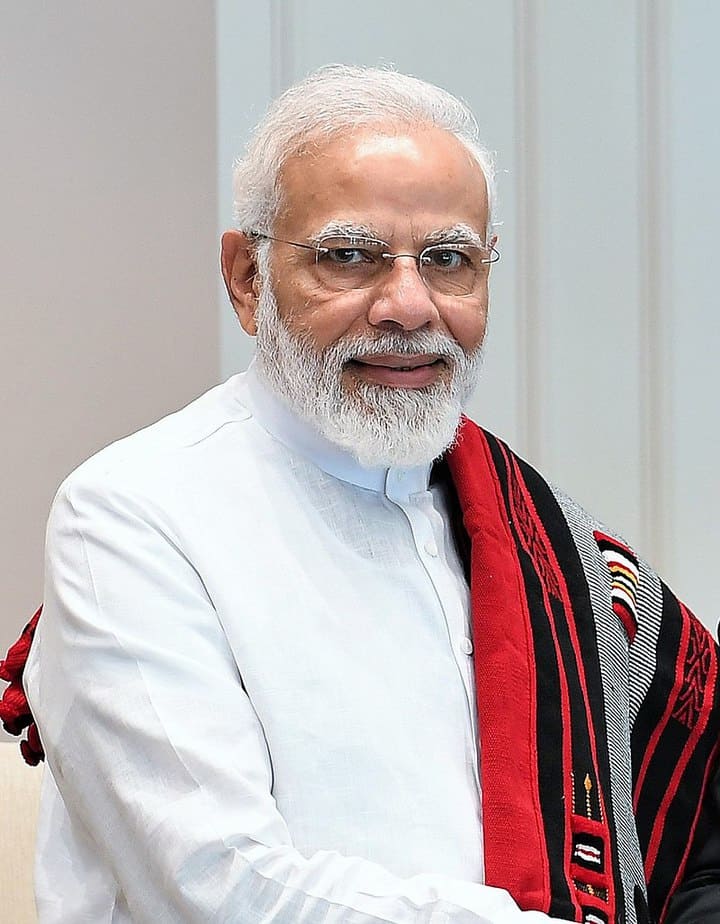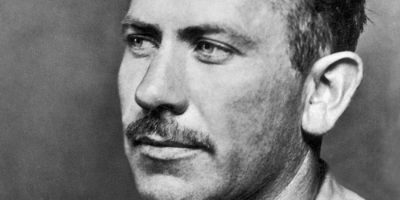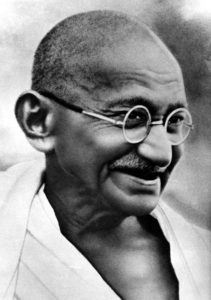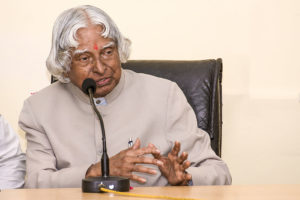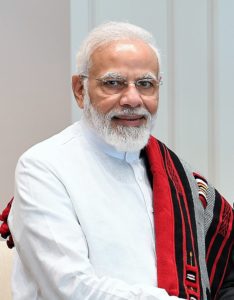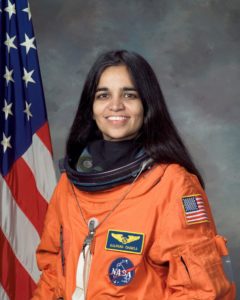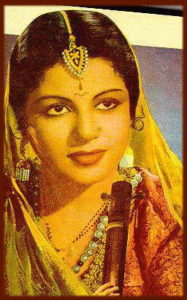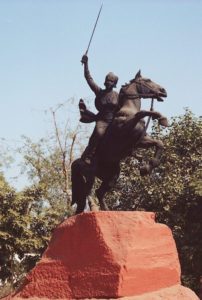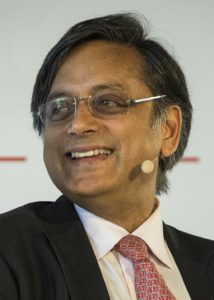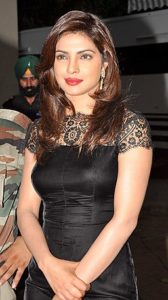Top 20 famous Indian people
*Originally published by Christine in October 2020 , updated by Vanessa R in July 2022 ,Updated by Vanessa R on May 2023 and Updated by John K in February 2024
India is a melting pot of different ethnicities. Many of its people find their identity in religion. India is proud of many great men and women that have been recognized and esteemed the world over.
We have included the well-known Indian personalities on this page along with their nicknames. These well-known individuals include saints, statesmen, singers, social reformers, and freedom fighters.
Here’s a list of the top 20 famous Indian people.
1. Mahatma Gandhi
Mahatma Gandhi is considered the father of India as he led the nationalist movement against British rule in India. He championed non-violent protest in pursuit of political and social progress and had achievements to this end. Gandhi was born in 1869 and was assassinated in 1948- his crime, he was too accommodating to Muslims during the Partition of India. Gandhi was accommodating of all religions and had just conducted multi-faith prayer meetings on the evening of his death.
Gandhi was a lawyer, anti-colonial nationalist, and political ethicist. He identified with the peasants and tried to live modestly. Gandhi’s start was not glorious at all! He read his first newspaper at age 18 and had little interest in politics. He wasn’t a good orator. He however kept at it and blossomed into a great political campaigner. Gandhi also unsuccessfully tried to start a law practice in India for two years. He however kick-started his law career in South Africa, where he also raised his family.
Mahatma Gandhi was famous during his lifetime and even more after his death. He achieved worldwide recognition. Many Indians esteem him as a saintly and almost godlike figure.
2. A. P. J. Abdul Kalam
Avul Pakir Jainulabdeen Abdul Kalam was India’s president from 2002 to 2007. He is also one of India’s most celebrated scientists and statesmen, as well as an author. Dr. Kalam was a trained aeronautical engineer who significantly advanced rocketry in India’s Defense Research and Development Organization and Indian Space Research Organization. He is credited with raising India to join the community of spacefaring nations.
Dr. Kalam was highly esteemed by the Indian people and named one of India’s two most trusted men- this happened when India’s politicians ranked lowly. He was the recipient of India’s highest civilian award, Bharat Ratna.
3. Narendra Modi
Narendra Modi is the leader with the most Twitter followers! He was also ranked the 15th most powerful person in the world in 2014. Modi is India’s Prime Minister with several highest awards by many nations and organizations. Under his leadership, India has seen a rise in its global standing and recognition. His leadership is seen as transformational, and this has earned him many significant awards from organizations and countries.
4. Kalpana Chawla
Kalpana Chawla put her country on the map as the first woman of Indian origin to go to space! She was also the first woman to study aeronautical engineering at Punjab Engineering College. For her feats, she is honoured as a national hero in India and was awarded the Congressional Space Medal of Honor.
Chawla was aboard the Space Shuttle Colombia in 1997 which cost her life together with those of the other six crew members that were aboard it. The spacecraft disintegrated during its re-entry into the Earth’s atmosphere.
Kalpana Chawla was a certified pilot with a commercial license for seaplanes, multi-engine aeroplanes, and gliders. Additionally, she was a certified flight instructor for gliders and aeroplanes. Today you will find buildings, streets, and institutions named in her honour.
5. Indira Gandhi
Indira Gandhi was the first female Prime Minister of India and the second longest-serving at that. Since her time, India has not had another female Prime Minister. Indira was inducted into the political scene early in life. She was a member of the working committee of the Congress Party when her father took office in 1947. Indira became a member of the upper chamber of the Indian parliament and minister of information and broadcasting.
It is evident that Indira was no stranger to politics and the controversy that came with the territory- she once was expelled from the party and was imprisoned on corruption charges. Indira was the first government leader to recognize the sovereignty and creation of Bangladesh. When she was assassinated in her garden by two of her own bodyguards, Indira Gandhi was succeeded by her son Rajiv.
6. Shanmukhavadivu Subbulakshmi
Singer Madurai Shanmukhavadivu Subbulakshmi makes the list of the top 10 Indian people– the first Indian to perform in the United Nations General Assembly in 1966. Subbulakshmi was the first Indian musician to receive the Ramon Magsaysay award, considered Asia’s Nobel Prize as well as the Bharat Ratna, India’s highest civilian honour. Subbulakshmi was an Indian Carnatic singer from Madurai, Tamil Nadu. Her genre or style was classical and semi-classical songs in the Carnatic tradition of South India. Her first music recording was at 10 years old- she had an early start in music and gave concerts on her own by age 17!
Subbulakshmi’s various debut performances moulded her into one of the leading Carnatic vocalists. Her performance at the prestigious Madras Music Academy, when she was only 13 years old, earned her an even bigger name and admiration in the music fraternity. Her music also had her travel the world as India’s cultural ambassador. As you might expect, a musician of her calibre had many awards under her belt.
7. Rasipuram Krishnaswami Iyer Narayanaswami
Rasipuram Krishnaswami Iyer Narayanaswami is easily the best fictional writer from India and one of the best in the world. His school days were mostly spent reading and writing, and what he couldn’t achieve in the grades he made up for in his writing. His college years and English teaching days affirmed his gift of writing and desire to become an actual writer.
Rasipuram’s publications are world-renowned with a significant impact. His books such as ‘The Financial Expert’, ‘Mr. Sampath’ and ‘Waiting for the Mahatma’ are very popular. He has also written amazing essays, and truly is one of the best novelists worldwide. Among his many awards are the Nobel Prize in Literature, AC Benson medal award, Sahitya Akademi Award, Padma Bhushan, and the American Academy of Arts and Letters.
Such great a writer was Narayan that his Mysore home was converted into a museum in his honour. His writing gave his audience a look into the other side of society, and the different experiences of diverse people.
8. Lakshmi Bai
Growing up a Brahman girl, in the company of boys, Lakshmi Bai was trained in martial arts and could sword fight as well as ride as she was raised in the Baji Rao II’s court, the leader of the people She was the queen of Jhansi and a leader of the Indian Mutiny.
Bai stands out and makes the list of the top 13 Indian people for her uprising against the British when she ruled on behalf of a minor heir. During this period, Bai rapidly organized her troops and assumed charge of the rebels in the Bundelkhand region. She also rallied support from Mutineers in the neighbouring areas. In battle, Bai wasn’t one to surrender even in the most difficult of circumstances- she led with such bravado. It is no surprise that she was killed in battle.
9. Shashi Tharoor
Dr Shashi Tharoor is the Member of Parliament for the Thiruvananthapuram constituency and Chairman of the Parliamentary Standing Committee on External Affairs. He is also a celebrated author of fiction and non-fiction.
Shashi Tharoor was amongst the first politicians to use social media for political engagement and was until 2013 the most followed Indian politician on Twitter. He was elected to Parliament in 2009 and has served in various capacities.
Tharoor is a recognized personality in India with much experience in matters of politics, economics, and diplomacy among other subjects. He served at the United Nations for three decades as a peacekeeper, refugee worker, and high-level administrator. He was a candidate for the United Nations Secretary-General position.
10. Priyanka Chopra
She is one of India’s most popular entertainers that has received many awards and accolades. Priyanka holds the Miss World 2000 title and has been named in the list of 100 most influential people in the world as well as the World’s 100 Most Powerful Women. She immerses herself in social issues like education, hunger, and equal rights for women.
Priyanka is a Bollywood star whose career pivoted to Hollywood. She continues to oscillate between the two industries and was the first South Asian actress to lead an American series for her role in “Quantico”.
11. Ashoka

Ashoka by Dharma from Wikimedia Commons
As Chandragupta Maurya’s grandson, Ashoka the Great of the Maurya Dynasty governed the Indian subcontinent from around 268 to 232 BCE. After the death and destruction of the Kalinga War, he became a Buddhist and preached the religion as part of his expansionist strategy. He became one of the most well-known historical personalities in India as a result of his contribution to the country’s destiny.
12. Chandragupta Maurya
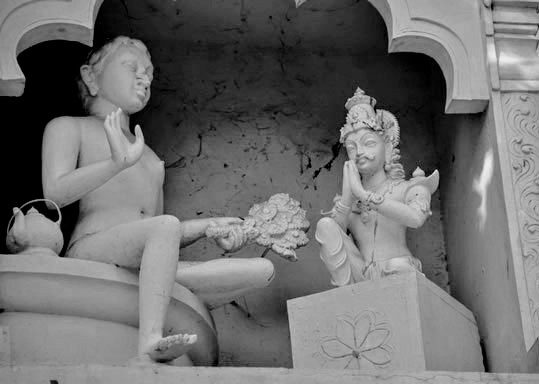
Chandragupta Maurya by Jayanti Sengupta from Wikimedia Commons
Chandragupta Maurya established the Maurya Empire in India. His principal advisor was the philosopher Chanakya. He also overthrew the Nanda Empire and participated in the Seleucid-Mauryan War. His rule was distinguished by religious tolerance, as well as cultural and economic success. He finally abdicated his kingship and converted to Jainism.
13. B.R Ambedkar
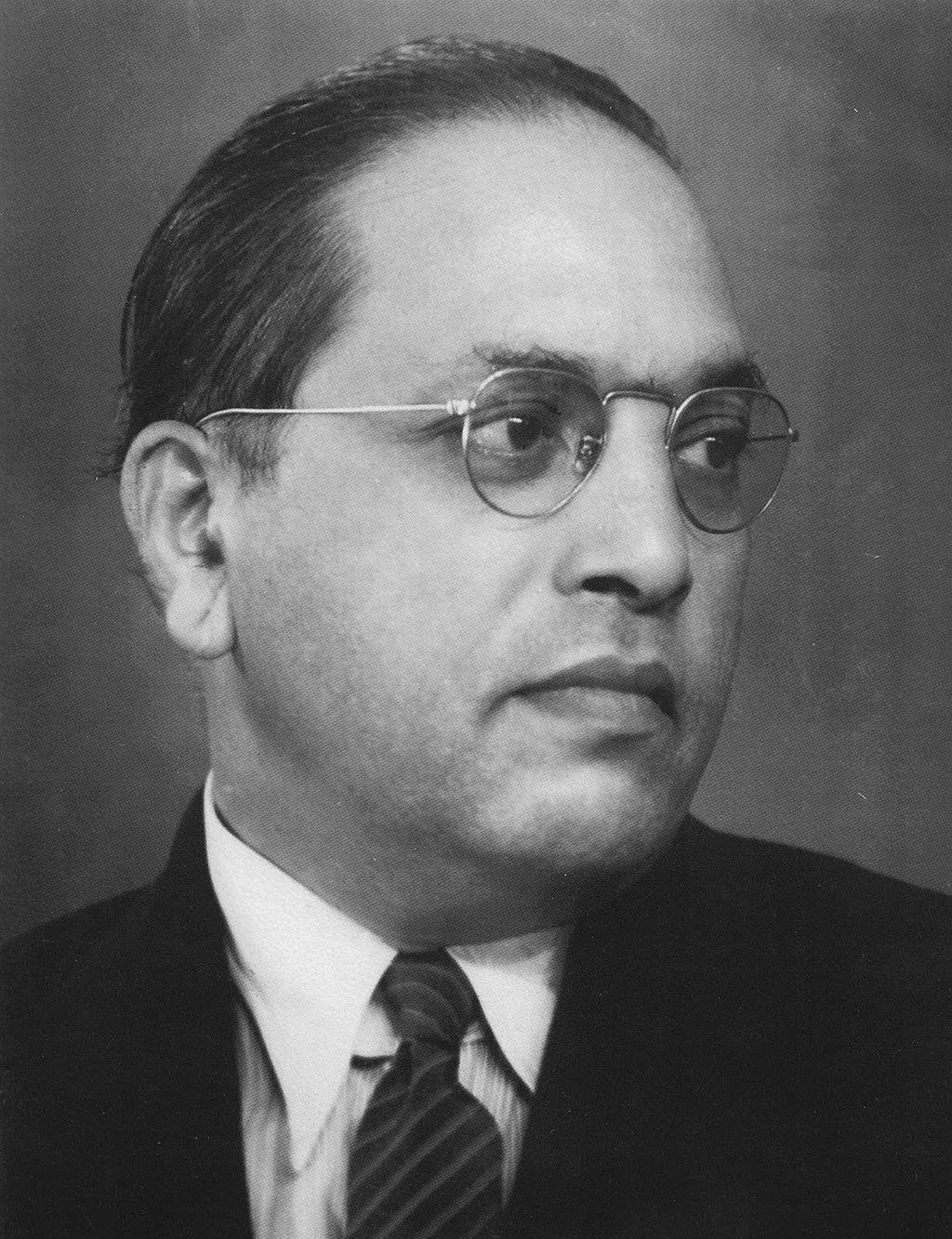
Dr Bhimrao by Unknown author from Wikimedia Commons
Who was the individual who was denied an education but persisted in his goal of becoming India’s law minister? Can you name them? Dr B.R. Ambedkar was the man who created the Indian Constitution.
On April 14, 1891, in Mhow, Madhya Pradesh, Dr Bhim Rao Ambedkar was born. The First Indian to receive a PhD in Economics from a foreign institution of higher learning was Dr B.R. Ambedkar. As the Minister of Labour for British India, the Chairman of the Constituent Drafting Committee, and the first Minister of Law and Justice for independent India, he sat in the Viceroy’s Executive Council.
14. Sardar Vallabhbhai Patel
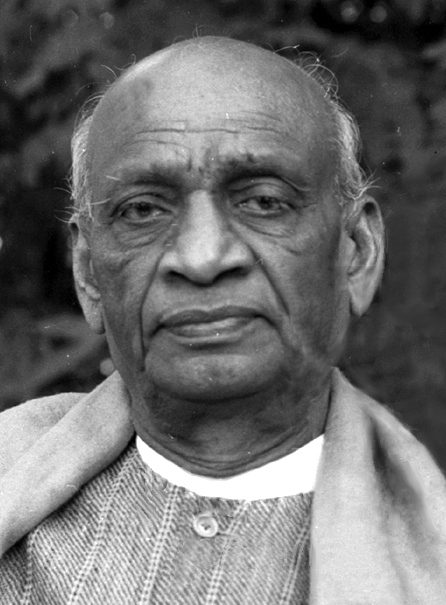
Sardar patel by Government of India work from Wikimedia Commons
India’s first deputy prime minister, Vallabhbhai Jhaverbhai Patel, presided over the government from 1947 to 1950. He was a senior member of the Indian National Congress and an Indian lawyer who played a key role in the country’s liberation campaign.
The moment he met Gandhiji was his turning point. Initially, Vallabhbhai was not a fan of Mahatma Gandhi, but after hearing him speak on Swaraj, he was greatly moved and joined the movement. Even better, he helped lead the Satyagraha movement as a volunteer. He did things so brilliantly that he earned the title “Sardar,” which means “leader.” Sardar Patel then supported Gandhi Ji and played a significant role in the fight for independence.
The post-independence reunification of India is credited to Sardar Patel. There were 562 princely states in India when it regained its independence in 1947, and each one aspired to statehood. In order to bring all the states together and create the Indian Union, Sardar Patel took the initiative at that time.
15. Dr B R Ambedkar
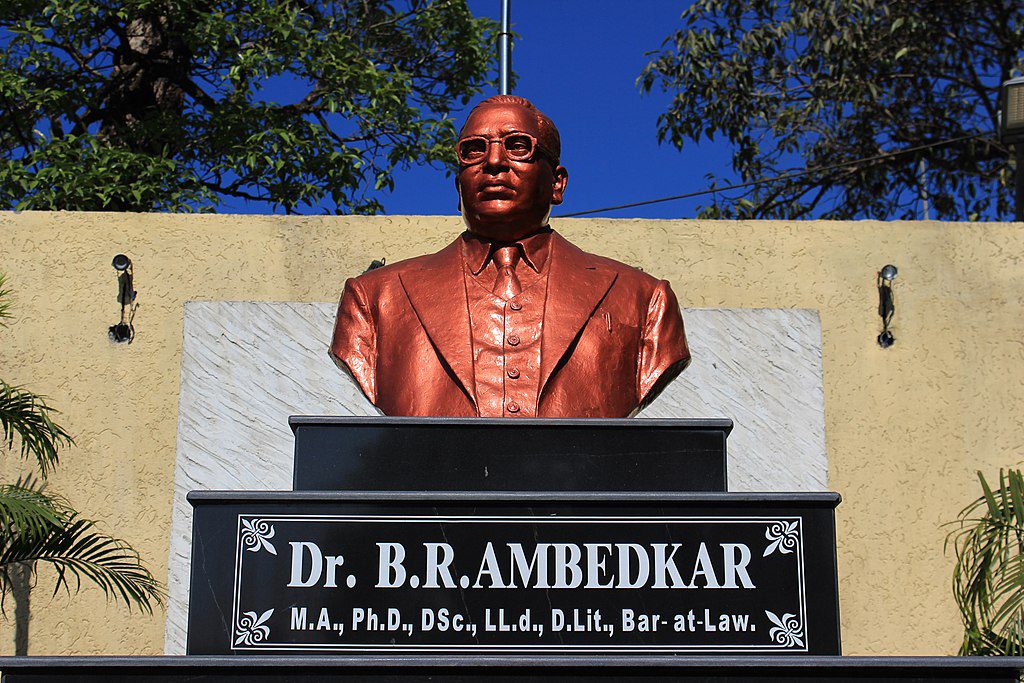
Dr. B. R. Ambedkar by Vijay Barot from Wikimedia Commons
Can you guess who was refused an education yet persevered to get to the position of India’s law minister? The Indian Constitution was created by Dr B.R. Ambedkar. In the Madhya Pradesh city of Mhow, Dr Bhim Rao Ambedkar was born on April 14, 1891.
The first Indian to obtain a PhD in Economics from a foreign institution was Dr B.R. Ambedkar. He served as the Viceroy’s Executive Council’s Minister of Labour for British India, as Chairman of the Constituent Drafting Committee, and as the country’s first Minister of Law and Justice after independence.
16. Rajinikanth
Rajinikanth is a cultural icon and a very popular cinema star. He had four siblings and his father was a police policeman while growing up. His mother passed away when he was five years old. Rajinikanth continued to work as a carpenter, and bus operator after finishing his formal education in the cities of Bangalore and Madras.
He saw an advertisement for acting classes while driving buses and decided to sign up for them with the help of his friends. He was spotted by Tamil film director K. Balachander while he was taking an acting class, and the rest is history.
17. Dhirubhai Ambani
Dhirajlal Hirachand Ambani was born Dhirubhai Ambani in a middle-class household. He was the first Indian entrepreneur to place his company on the Forbes 500 list. At the age of 16, Ambani, whose father was a teacher, travelled to Yemen where he worked as an oil company clerk and a petrol station attendant. With Rs. 50,000, he returned to India in 1958 and started a textile trade business that would eventually grow to become one of the country’s biggest corporate houses with interests in a wide range of sectors.
18. Mahendra Singh Dhoni
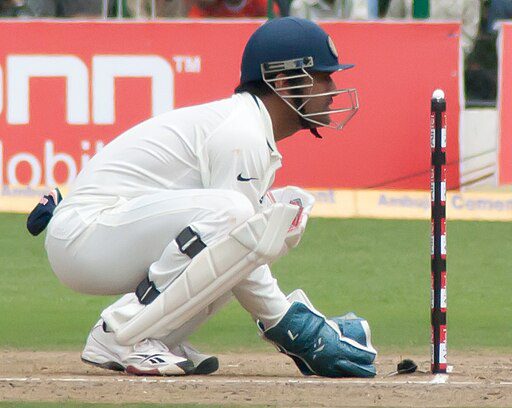
Pulkitsinha, CC BY-SA 2.0, via Wikimedia Commons
One of India’s finest cricketers, Mahendra Singh Dhoni, didn’t show much interest in the sport growing up. At the district and club levels, Dhoni first participated in football and badminton. He was chosen by his coach to play as a wicketkeeper in the local cricket club while he was still playing goalie for a football team.
He developed his cricketing talents and was regularly chosen for club cricket as he began keeping wickets consistently for the neighbourhood club. Originally from a lower-middle-class background, Pan Singh, Dhoni’s father, worked as a junior employee at MECON. Dhoni then decided to work as a train ticket examiner or TTE, for the Indian Railways in order to support himself and his family.
19. Narayana Murthy
Known as the “father of the Indian IT Industry,” Narayana Murthy is one of the 12 most successful businessmen of all time. Yet, his initiatives haven’t always been a success. A year and a half after its founding, Narayana Murthy’s first business, Softronics, failed. Narayana Murthy joined Patni Computer Systems and worked there for around five years after his first business failed.
Then, in 1981, he founded Infosys with the help of six software developers and a small amount of funding from his wife Sudha Murthy. Nowadays, Infosys ranks third among Indian-based IT services companies and is the fifth-largest publicly traded corporation in India.
20. Gautam Adani
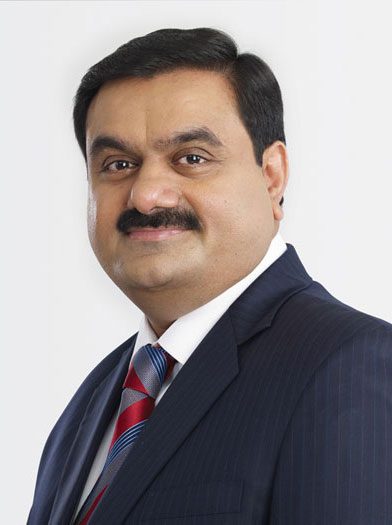
Gautam Adani, CC BY 3.0, via Wikimedia Commons
Gautam Adani is the founder and chairman of the Adani Group, a corporation with interests in electricity production, transmission, gas distribution, ports, oil and gas exploration, coal mining, trade, and multi-modal transportation sectors.
The road to Gautam Adani’s empire, however, was not an easy one because he had to overcome great hardships at a young age. Gautam Adani had to leave Gujarat University at the age of 18 while still enrolled in the second year of his B.Com course because of financial difficulties and started working as a diamond sorter in Bombay.
The young Adani, however, did not let his early hardships derail him. Adani started a diamond trading company and, by the age of 20, had earned his first million dollars.
These top 20 Indian people illustrate the diversity and greatness of the nation and demonstrate just how India competes on the global scene.
How Indian Cinema Influences Culture Around the World
Indian cinema, a cinematic colossus, transcends borders with Bollywood’s Hindi-language charm, captivating audiences across 90 countries. Stars like Priyanka Chopra and Shah Rukh Khan, akin to Hollywood’s luminaries, become cultural emissaries, imprinting India’s essence globally.
Like iconic landmarks, Bollywood’s impact mirrors the Eiffel Tower‘s majesty. A cultural symphony, it introduces diverse facets, from A.R. Rahman’s melodies resonating worldwide to the aromatic trails of Indian cuisine.
Beyond entertainment, it unveils the allure of Indian fashion, the serenity of yoga, and spiritual practices. As influential leaders shape history, Bollywood shapes perceptions, uniting cultures in a grand tapestry of human experience. Here are 10 facts showcasing its impact:
1. Globalization of Bollywood
Courtesy of YouTube
Bollywood, the epicenter of Indian cinema, has evolved into a global cultural force, shaping entertainment trends across borders. Its mesmerizing narratives, weaving melodrama, romance, and social commentary, transcend cultural divides, resonating universally.
Picture renowned actors like Priyanka Chopra Jonas and directors like Karan Johar as the maestros orchestrating this cultural symphony. The infectious beats and vibrant choreography inspire worldwide phenomena, from flash mobs to dance challenges.
Bollywood, with its vivid portrayal of Indian culture, acts as a cultural envoy, fostering cross-cultural understanding. Renowned figures become ambassadors, and the industry’s influence extends, imprinting its mark on global fashion, music, and filmmaking.
2. Cultural Exchange
Indian cinema, a dynamic cultural conduit, opens gateways into the tapestry of Indian life, featuring illustrious actors like Aishwarya Rai and directors like Rajkumar Hirani as cultural narrators.
From the grandeur of traditional festivals to the intricacies of wedding customs, films paint a vivid picture of India’s diverse landscapes. Celebrities such as Shahid Kapoor and directors like Zoya Akhtar become ambassadors, fueling cross-cultural curiosity worldwide.
This cinematic exposure enriches global perspectives, deepening appreciation for Indian heritage. As Indian cinema showcases the beauty and intricacies of its culture, it acts as a bridge, forging connections and fostering an interconnected, inclusive world, with figures like Amitabh Bachchan leading the way.
3. Fashion Trends
Courtesy of YouTube
Bollywood, a powerhouse within Indian cinema, stands as a formidable influencer in shaping global fashion trends. The opulent costumes donned by Bollywood luminaries like Deepika Padukone and directors like Karan Johar transcend mere attire, morphing into iconic style statements that reverberate far beyond India’s borders.
Whether adorned in intricate sarees, elegant salwar kameez, or regal sherwanis, Indian ensembles showcased in films serve as muses for international fashion designers.
This fusion of traditional Indian aesthetics with contemporary trends not only captivates audiences but also leaves an enduring imprint on runway collections, red-carpet looks, and everyday fashion choices.
Through its sartorial grandeur, Indian cinema thrusts Indian fashion onto the global stage, etching an indelible mark on the world’s style landscape, with personalities like Priyanka Chopra leading the charge.
4. Music and Dance
Bollywood, the epitome of Indian cinema, wields a profound impact on global culture through its enchanting music and dance sequences. Renowned celebrities like A.R. Rahman and iconic actors like Hrithik Roshan contribute to this cultural phenomenon.
The fusion of traditional Indian melodies with contemporary Western beats in Bollywood’s soundtrack creates an enthralling musical experience with universal appeal.
Accompanied by exuberant dance choreography, these vibrant compositions transcend linguistic barriers, resonating with audiences worldwide.
The infectious rhythms and catchy tunes of Indian film music have not only inspired international music styles and dance forms but have also played a pivotal role in the global dissemination of Indian culture.
Through its enchanting melodies and dynamic choreography, Indian cinema, led by figures like Priyanka Chopra, continues to shape the global music and dance landscape, fostering cross-cultural appreciation and unity.
5. Language Learning
Courtesy of YouTube
Indian cinema, spearheaded by luminaries like Aamir Khan and acclaimed directors like Rajkumar Hirani, serves as a catalyst for language learning, propelling the global dissemination of Hindi and other regional languages.
Renowned celebrities in Bollywood, such as Deepika Padukone, become ambassadors, drawing non-Indian audiences into the linguistic tapestry of Hindi. As viewers immerse themselves in Bollywood movies, they encounter Hindi phrases, sparking a keen interest in learning the language.
This exposure not only broadens cultural horizons but also enhances linguistic proficiency in regional languages. Consequently, Indian languages permeate global popular culture, fostering cross-cultural communication and appreciation.
Indian cinema, with figures like Shah Rukh Khan leading the way, plays a pivotal role in shaping cultural dynamics and promoting intercultural dialogue on a global scale.
6. Cinematic Techniques
Indian cinema, led by visionary directors like Satyajit Ray and celebrated actors like Amitabh Bachchan, stands as a trailblazer, imprinting an everlasting legacy on global filmmaking. Renowned celebrities, such as Aishwarya Rai, contribute to this cinematic phenomenon.
Bollywood filmmakers, acknowledged for their narrative depth and visual brilliance, pioneer techniques transcending borders. The seamless blend of epic storytelling, breathtaking cinematography, and creative editing by Indian filmmakers resonates globally, inspiring counterparts worldwide.
International filmmakers, influenced by the dynamic use of colors, music, and montage in Indian films, contribute to the evolution of cinematic language.
Through the creative vision of directors like Rajkumar Hirani and technical prowess, Indian cinema continually pushes boundaries, shaping the global landscape and captivating audiences universally..
7. Representation and Diversity
Courtesy of YouTube
Indian cinema, heralded by luminaries like Nandita Das and influential directors like Mira Nair, emerges as a global torchbearer for representation and diversity. Renowned celebrities in Bollywood, such as Ayushmann Khurrana, contribute to this cinematic celebration.
Celebrated for its kaleidoscopic portrayal of cultures, languages, and traditions, Indian films weave a rich tapestry that resonates universally. From regional identities to ethnic diversity, Bollywood embraces multifaceted characters, fostering cross-cultural understanding.
Through inclusive storytelling, Indian cinema becomes a catalyst for empathy and dialogue on identity and representation issues.
By amplifying marginalized voices, figures like Vidya Balan showcase the multifaceted nature of Indian society, inspiring an inclusive approach to storytelling that sets a global precedent for diversity in media landscapes.
8. Social Issues
Indian cinema, propelled by influential figures like Shabana Azmi and trailblazing directors like Anubhav Sinha, emerges as a dynamic platform for addressing pressing social issues—poverty, gender inequality, and caste discrimination.
Renowned actors such as Ranveer Singh contribute to this cinematic crusade. Through compelling storytelling and poignant narratives, Indian films illuminate these pervasive issues, sparking vital conversations and fostering global social awareness.
By portraying the struggles and triumphs of marginalized communities, Bollywood becomes a catalyst for empathy and understanding worldwide, igniting action for positive social change.
As an influential force for social dialogue and advocacy, Indian cinema transcends borders, amplifying the voices of the marginalized and inspiring collective efforts toward a more just and equitable society.
9. Tourism and Travel
Courtesy of YouTube
Indian cinema, with luminaries like Aamir Khan and visionary directors like Imtiaz Ali at the helm, emerges as a captivating ambassador for tourism, spotlighting India’s breathtaking landscapes and cultural treasures globally.
Renowned celebrities such as Deepika Padukone contribute to this cinematic allure. Particularly in Bollywood, through vibrant cinematography and exotic locales, movies offer tantalizing glimpses of India’s diverse beauty – from majestic palaces to serene hill stations.
Inspired by these cinematic spectacles, international tourists eagerly embark on journeys to explore the enchanting destinations immortalized on screen.
Indian cinema, beyond mere entertainment, stands as a powerful catalyst for tourism, inviting travelers to discover the magic of India firsthand, with personalities like Shah Rukh Khan leading the way.
10. Cinematic Influence
Indian cinema, propelled by influential figures like director Mira Nair and celebrated actors like Irrfan Khan, leaves an indelible mark on the global stage, garnering acclaim and admiration. Renowned celebrities such as Priyanka Chopra contribute to this cinematic influence.
Bollywood’s vibrant storytelling and emotive performances resonate internationally, influencing filmmakers and artists globally. This impact extends from Hollywood to prestigious international film festivals, evident in the exploration of diverse cultural themes and innovative storytelling techniques.
As Indian filmmakers and actors, gaining recognition globally, continue to shape the evolution of cinema, they foster cross-cultural exchange and collaboration.
Through their boundless creativity and talent, they inspire audiences worldwide, enriching the cinematic landscape with the profound depth and diversity of Indian storytelling.
Conclusion
In conclusion, the vibrant world of Indian cinema transcends borders, leaving an indelible mark on global culture. Bollywood’s kaleidoscopic storytelling, infectious music, and mesmerizing dance sequences have turned it into a cultural juggernaut, influencing fashion, music, and filmmaking worldwide.
Through its rich portrayals of Indian life, traditions, and festivals, Indian cinema fosters cross-cultural understanding, acting as a powerful vehicle for cultural exchange.
Bollywood’s impact extends to language learning, cinematic techniques, representation, and advocacy for social issues. As a compelling advertisement for tourism, Indian cinema invites global audiences to explore the enchanting beauty of the country.
In essence, Indian cinema emerges as a global cultural ambassador, connecting the world through the magic of storytelling, music, and dance.
Planning a trip to Paris ? Get ready !
These are Amazon’s best-selling travel products that you may need for coming to Paris.
Bookstore
- The best travel book : Rick Steves – Paris 2023 – Learn more here
- Fodor’s Paris 2024 – Learn more here
Travel Gear
- Venture Pal Lightweight Backpack – Learn more here
- Samsonite Winfield 2 28″ Luggage – Learn more here
- Swig Savvy’s Stainless Steel Insulated Water Bottle – Learn more here
Check Amazon’s best-seller list for the most popular travel accessories. We sometimes read this list just to find out what new travel products people are buying.

